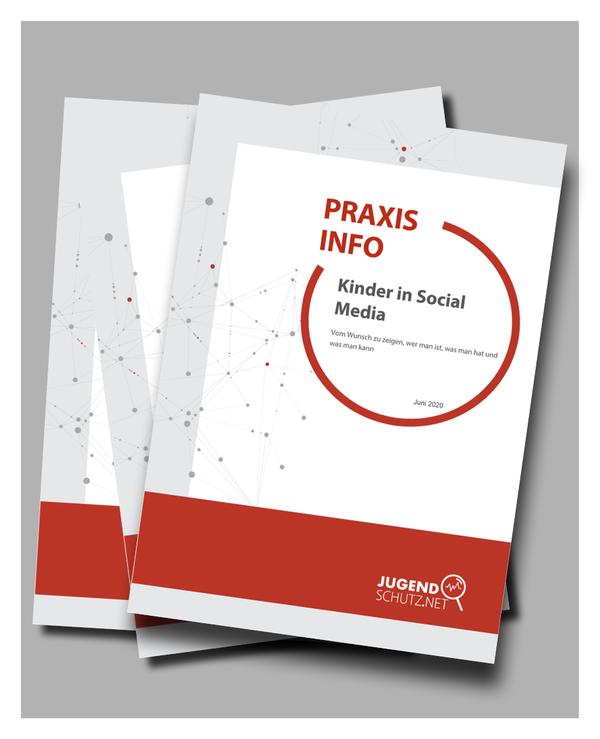How children present themselves on social media
For the current practical information "Children in social media - The desire to show who you are, what you have and what you can do ", jugendschutz.net looked at more than 200 social media profiles of children under 13. It was observed that children take their cue from well-known adult role models when creating content for their online presences. Most of the content is harmless and aims to showcase themselves, their friends or relatives, or their own skills.
The use of social media by children is particularly problematic when highly private areas of life are made public. There is a risk that the published personal data and information will be misused by others to the detriment of the children.
Another potential danger is the often toxic environment on social media platforms. Since content produced by children usually cannot compete with the glossy productions of professional influencers, they may become the target of scorn and ridicule. Depending on their age and stage of development, children do not yet have strategies for dealing adequately with such attacks.
According to jugendschutz.net's practical information, providers of the relevant services have not yet made any serious efforts to exclude children from using their dangerous services. Child-friendly alternatives to the known platforms still do not exist or are unattractive due to their low penetration. Therefore, educators and pedagogical professionals continue to face the challenge of giving children the opportunity to make use of their right to participate in the digital world without exposing themselves to risks by teaching them media liter acy. jugendschutz.net has therefore compiled the following helpful tips:
What parents can do
- Accompany instead of monitor: Look at his or her favorite offers together with your child and talk about fascination and risks.
- Agree on rules: Communicate to your child the conditions under which you allow active participation.
- Ensuresafe use: Help your child set up his or her account safely and make the right decisions about what to post.
Here's what you can advise children to do
- Protect privacy: Never share content that reveals too much about you. Think twice before posting if you really want others to see it. Use settings options to protect your content.
- Fame isn't everything: Don't try to gain followers or new online acquaintances at any price. You don't know these people and you don't know why they are interested in you.
- Get help: If someone is being silly to you online, use the reporting and blocking features offered by the service. If necessary, seek advice from an adult who can support you.
The entire practical information "Children in Social Media" is available free of charge at jugendschutz.net. jugendschutz.net is the joint competence center of the federal and state governments for the protection of children and young people on the Internet.
Further information

